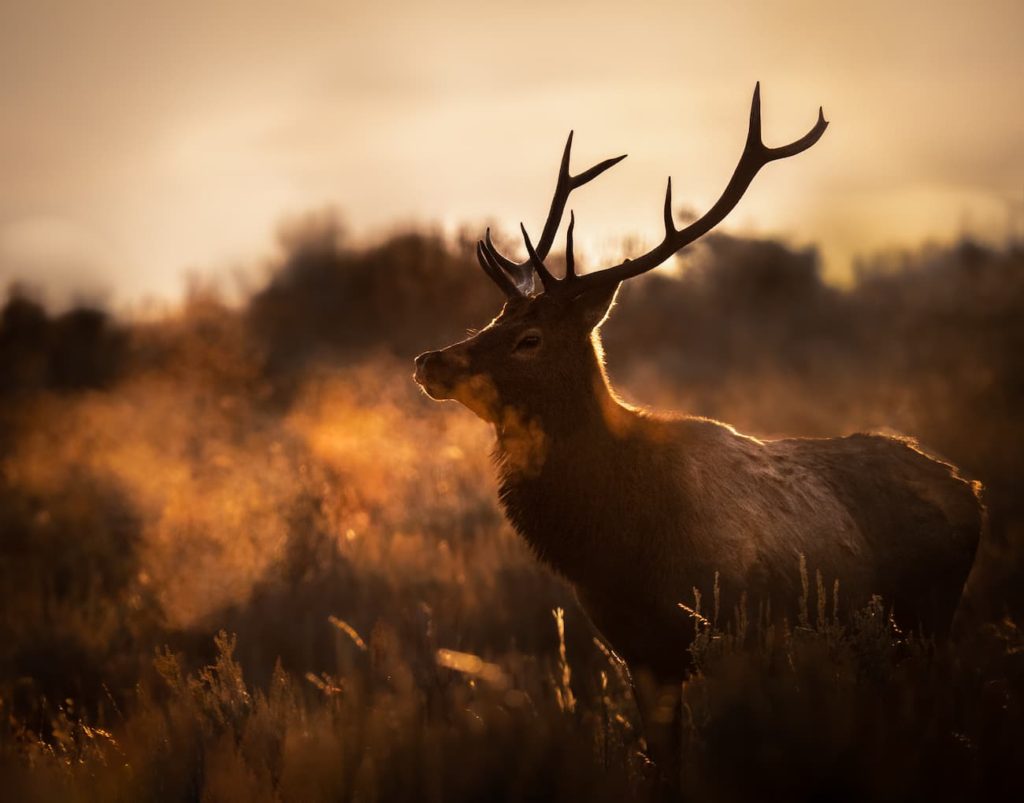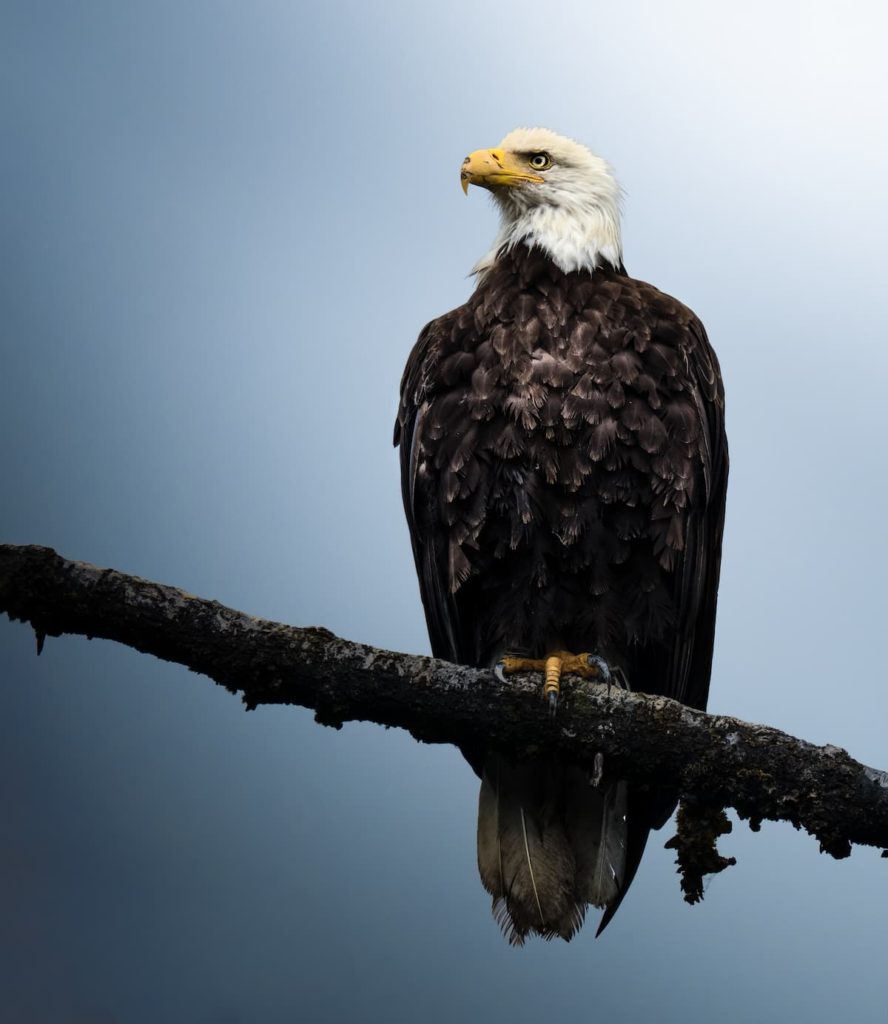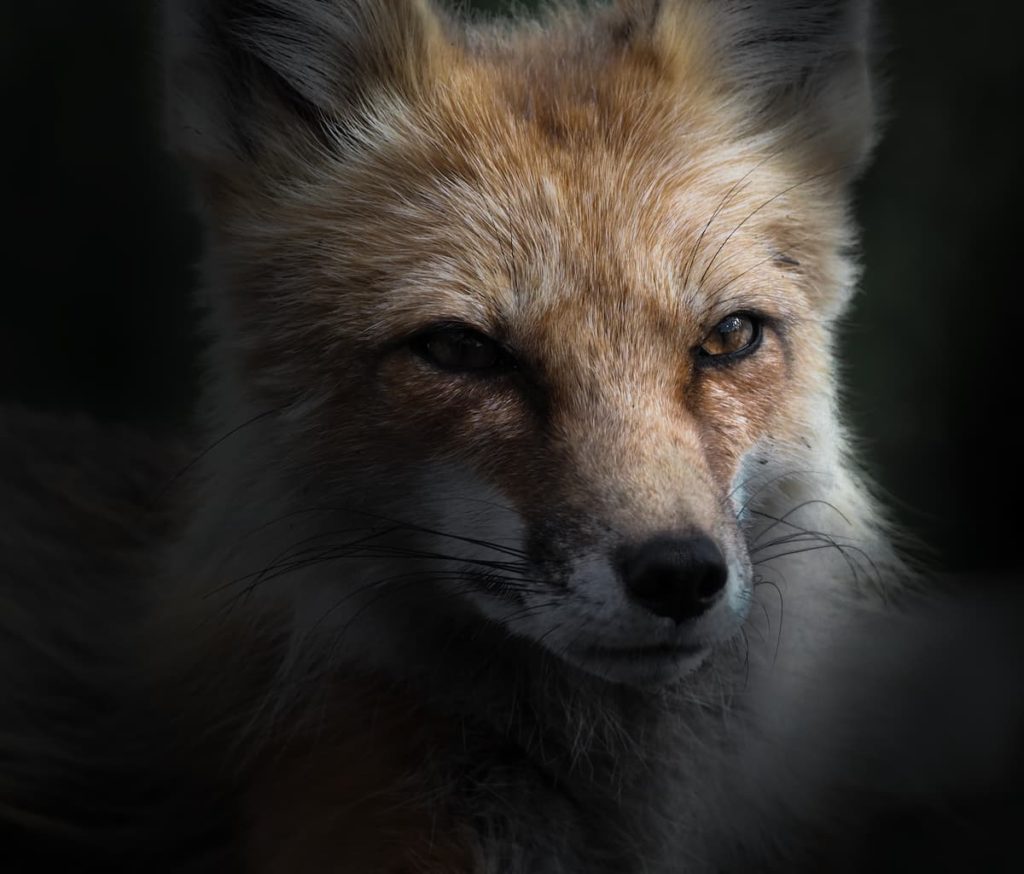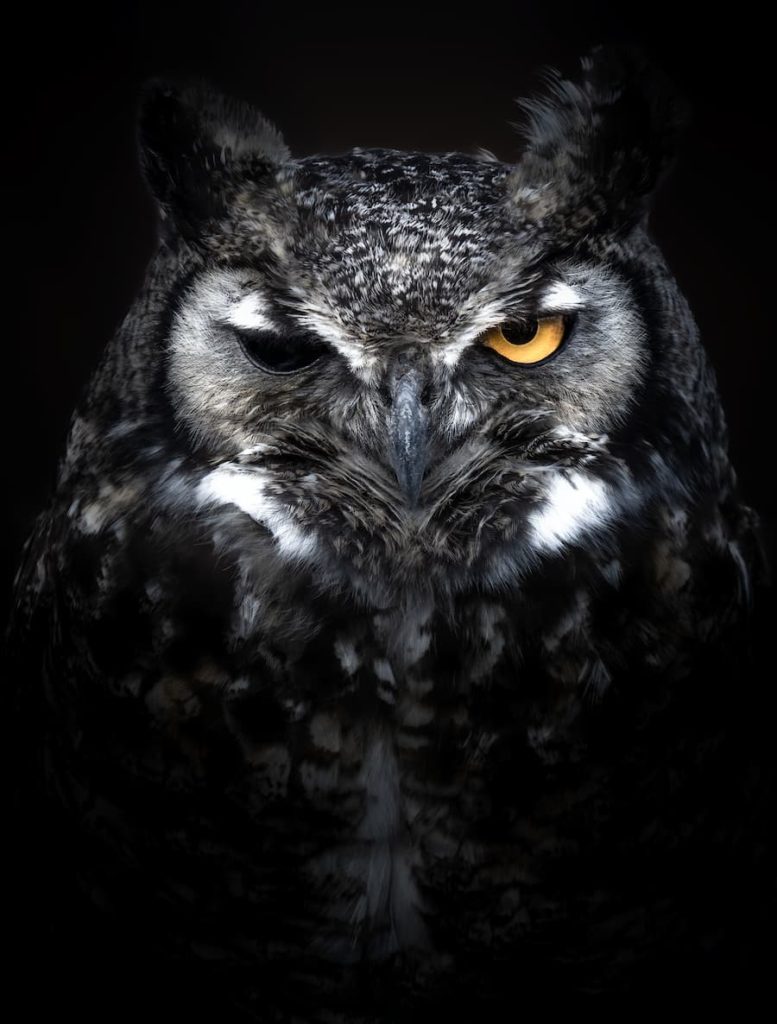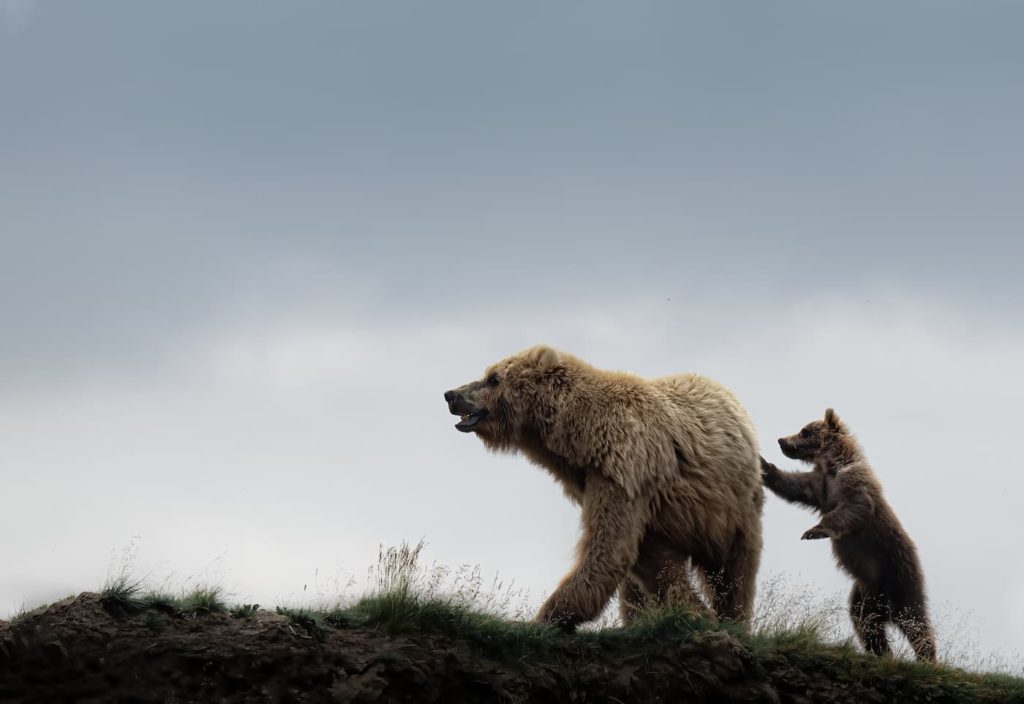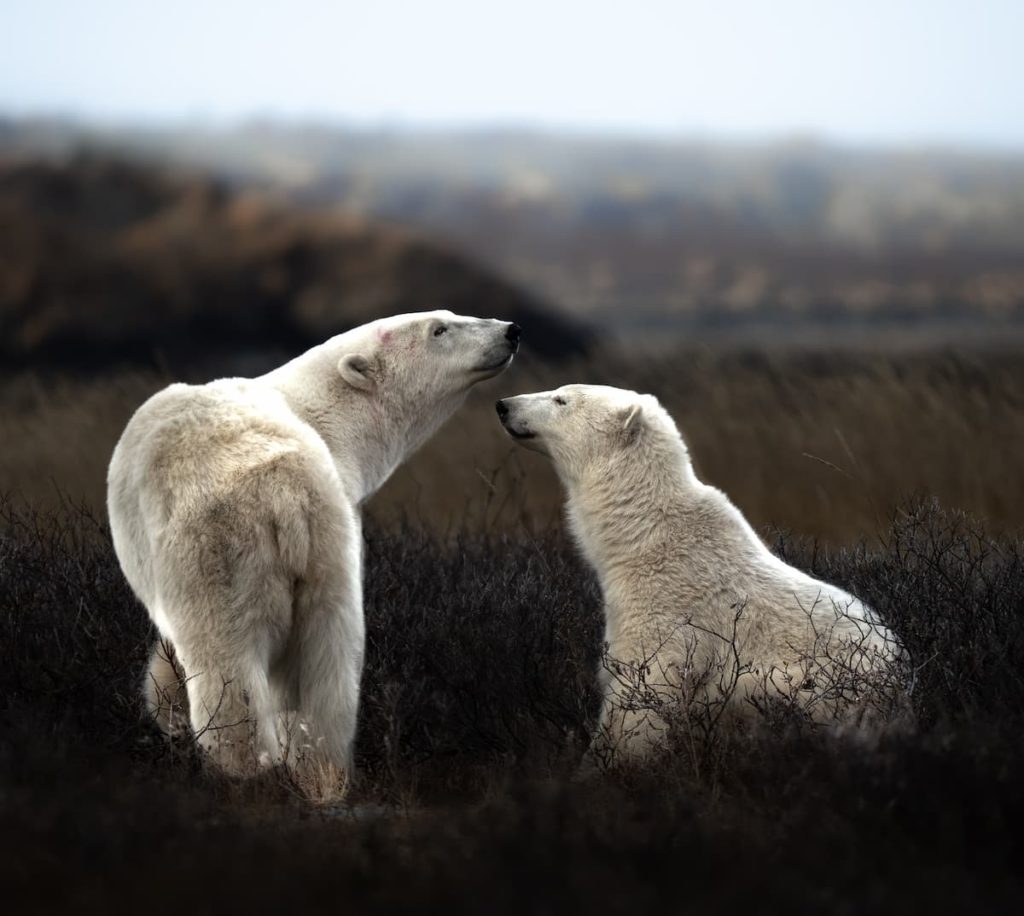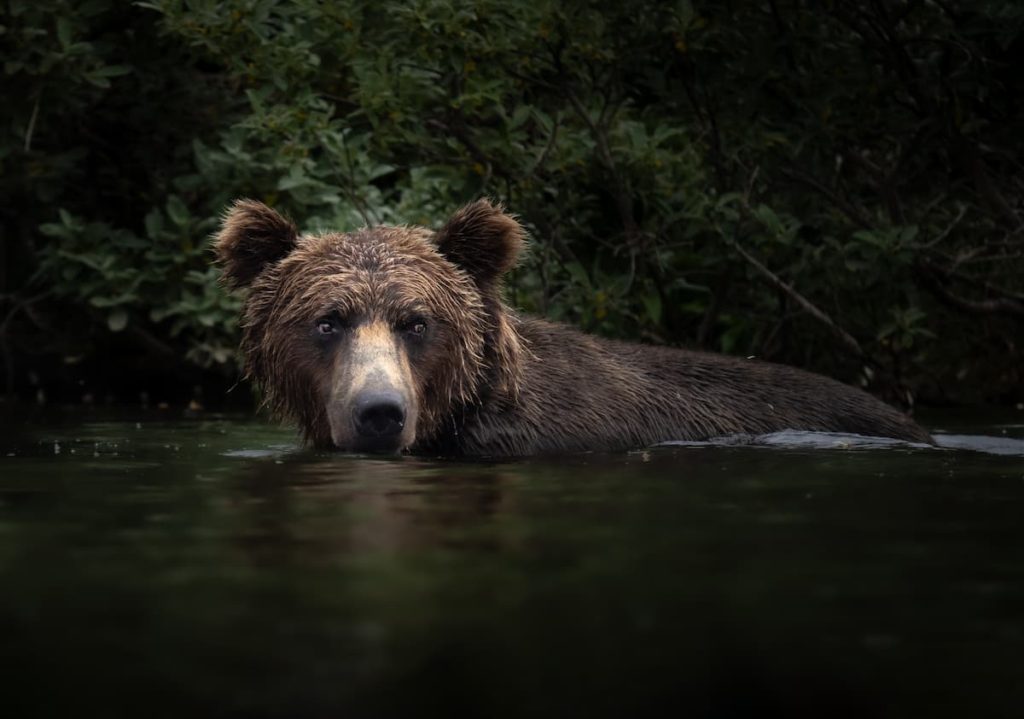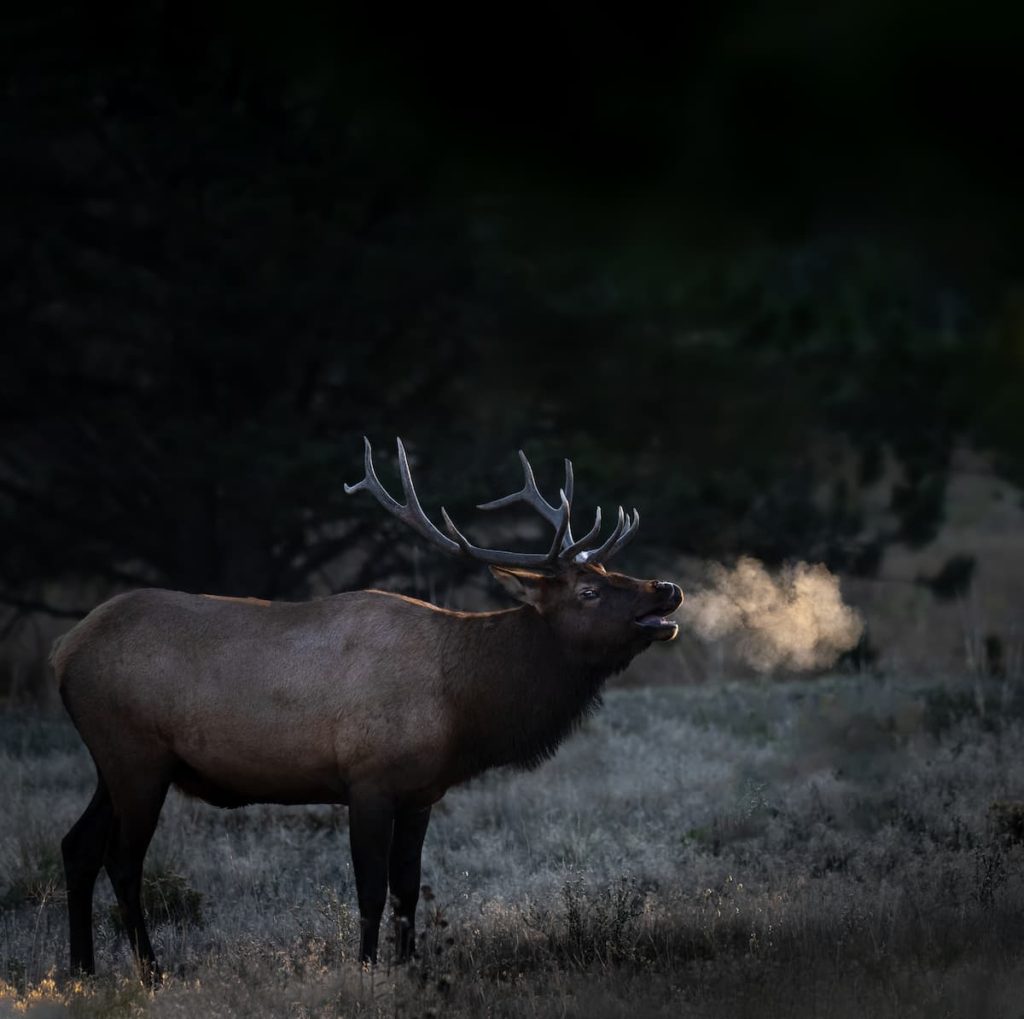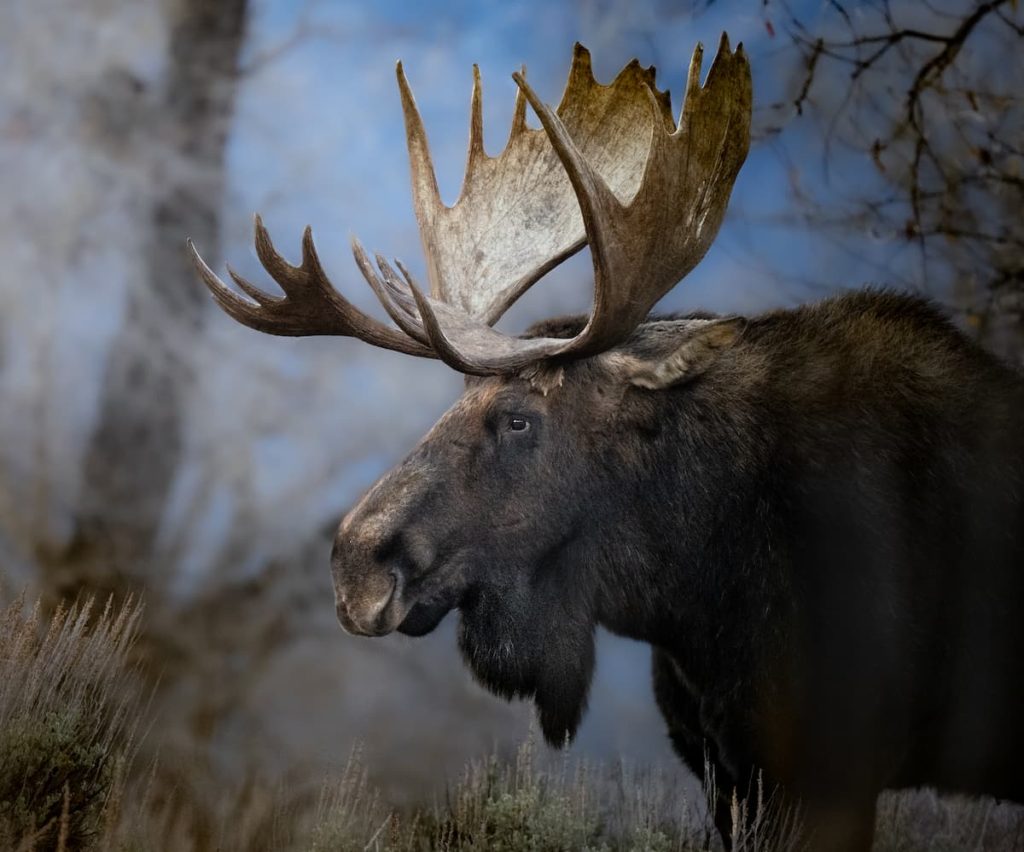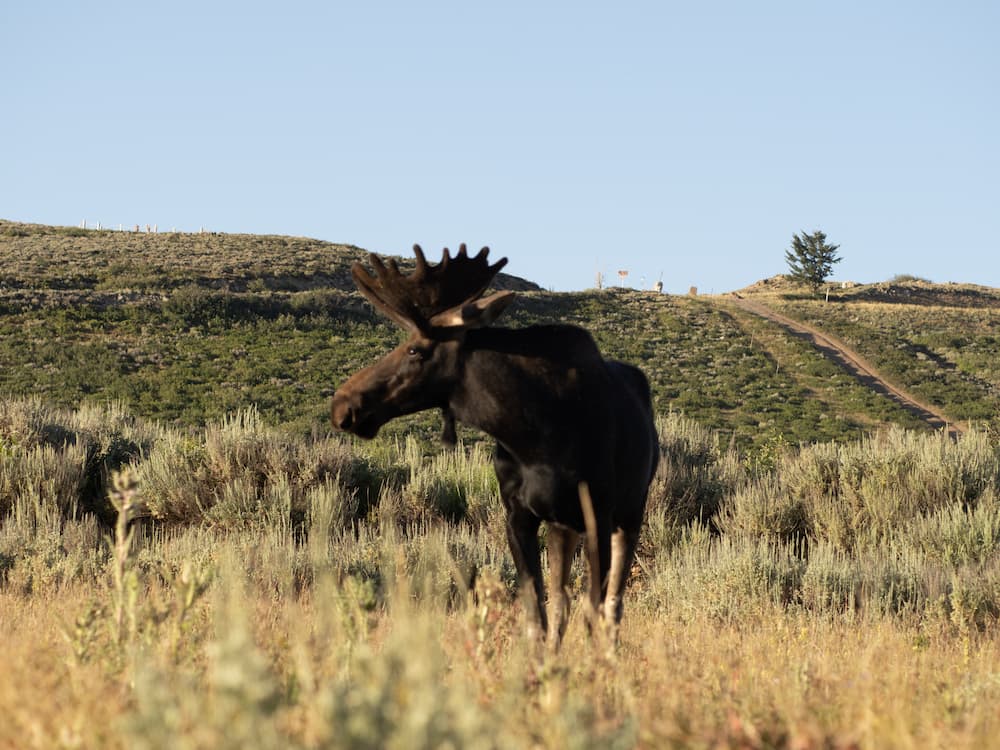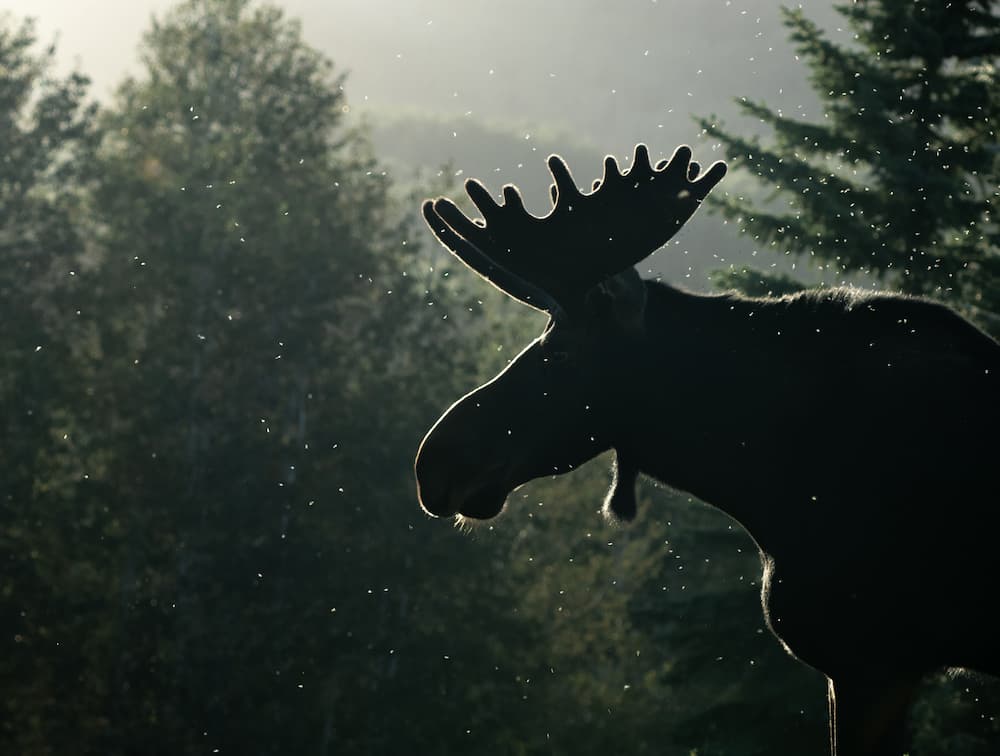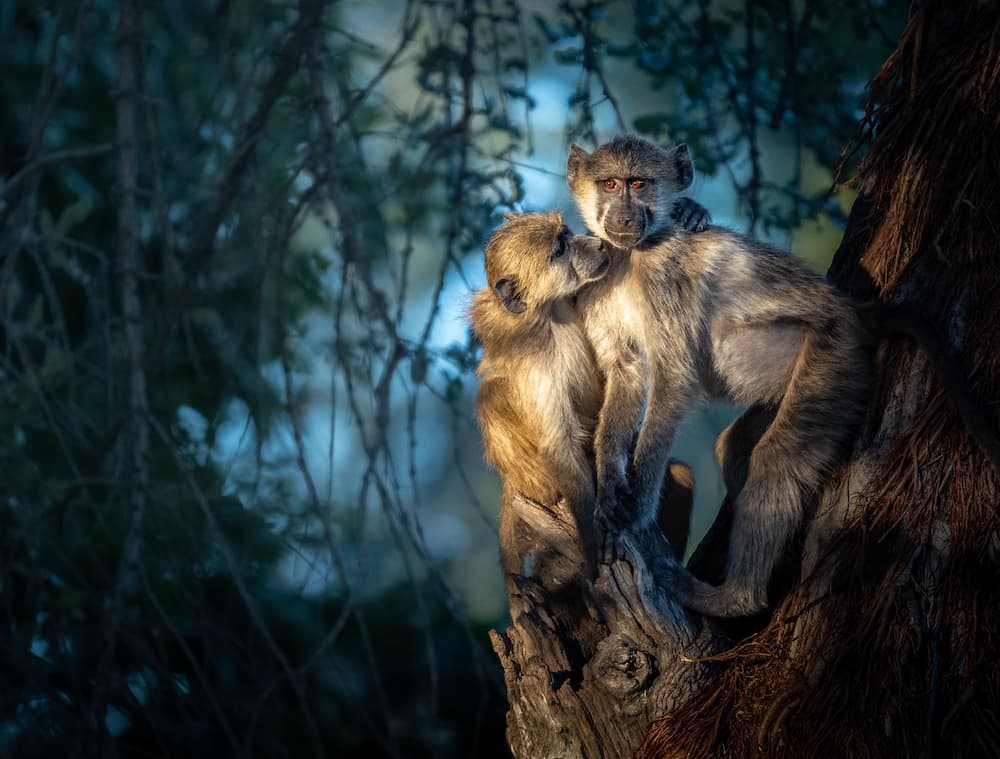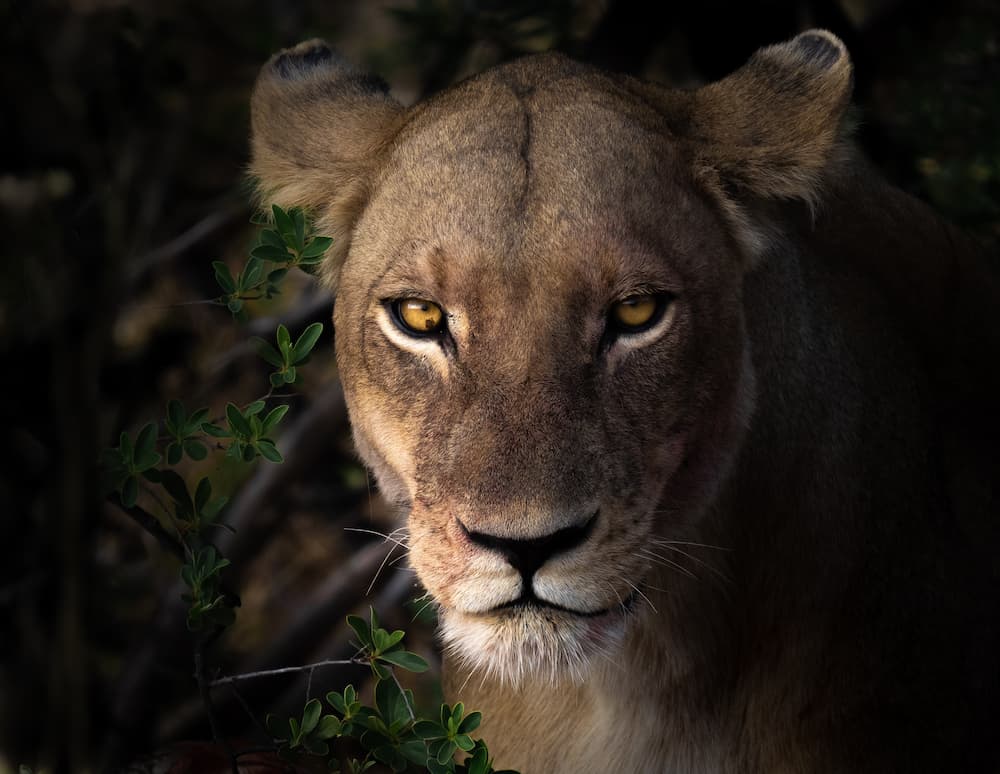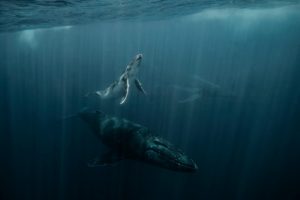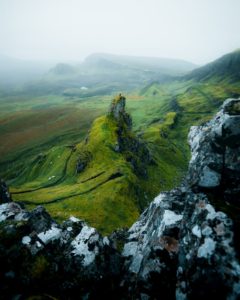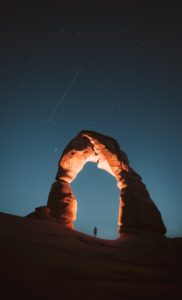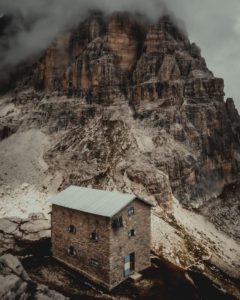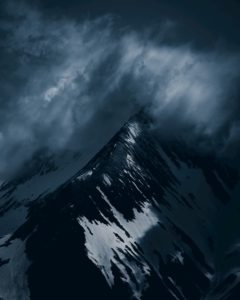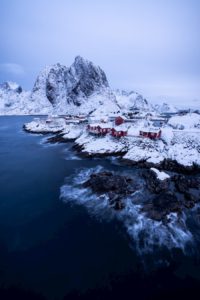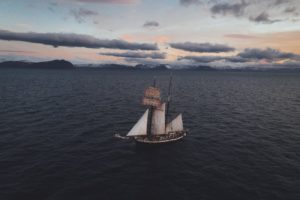
Brooke Bartleson
@brookelittlebear
Wildlife photographer based in the US
Introducing Brooke Bartleson
Brooke Bartleson (@brookelittlebear) is a professional wildlife photographer, Olympus Explorer, and Wildlife Research Tech based in a van in the American Rocky Mountains. She is a Woman in the Wild, a true adventurer with a deep love for all things wild. She follows where the wildlife goes, living a nomadic lifestyle, together with her dog Bruce. She highly values her freedom, building a bond with wildlife and nature, and aims to empower other female photographers in the wild. In this interview, she gives an insight into what fulfills her being as a visual creator and traveler despite the sometimes dangerous animals, harsh conditions, and discomfort. She also shares some best practices and tips on wildlife photography and animal behavior.
Interview
Welcome Brooke! On your website is written: “Truly a girl with an unquenchable sense of adventure and a soul-shattering love for all things wild.” What do you think were significant moments that shaped you over the course of your life and brought you to nature and wildlife?
I grew up on the East Coast, in the suburbs of New York City. From the hills above my neighborhood, you could glimpse NYC skyscrapers rising into the sky a thousand times taller than the tallest trees, and at night their distant lights outshone the stars. Developments and parking lots stretched out like concrete meadows, ringed in by highways that slashed through woodland while train tracks scared adjacent wetlands all in the name of serving densely populated city centers. It was easy for kids growing up in a place like that to be completely unaware of the wild world that exists far away from this developed land of malls and concrete. But I was lucky, I had a small backyard with grass and trees and a vivid imagination. I would play outside day after day and while I played I would fill that backyard with visions of bears and wolves and foxes and all the other animals I learned about in story books. I would imagine the houses surrounding mine were untamed mountains and unexplored cliff bands begging to be explored by some wandering soul. I’d let my vision blur and imagine the cars driving down the street were missive bison migrating between ranges in search of food and freedom. As I grew up, those childhood visions never left me. Those imaginings were my happy places for so long, and as an adult I’ve realized that now I have the power to make those visions come true for myself. I can choose to fill my world with real bears and wolves and foxes, I can be the person exploring the mountainous wildernesses and watching migrating bison in their natural habitat.
"Sure, it has taken some sacrifices and it hasn’t been easy. But I have wanted this all my life, and now that I have it I will never settle for anything less than the wildest of things."
You “gave up” normal life for wildlife photography. What do you think you gave up? And, what helped you to let go of this idea of what “normal life” is and feel convinced and in peace with the extraordinary choices you made/lifestyle you took on?
Stability. Wild animals have no stability. They live based on necessity and the fulfillment of immediate needs. They aren’t governed or motivated by comfort and predictability. In order to follow wildlife as closely as I do, I have to live a little bit like a wild animal; therefore I had to give up the stability that we humans are taught we need. I gave up having a home, I live nomadically now so I can follow wildlife migrations and seasonal behaviors. I gave up consistent income; it isn’t easy to make money as any kind of photographer these days and the tiny niche of wildlife photography is no exception. I gave up some relationships and friendships; it’s hard to hold onto many interpersonal relationships when you’re always traveling or disappearing off the grid. But as I’ve gone through the adjustment to adapt to this new unstable lifestyle, I’ve realized that I think this is how humans are truly meant to live. We were made to be as untethered and unchained as the wildest sparrow or wolf or deer. There is so much freedom to be found in nature when you’re willing to embrace the discomfort and uncertainty as a small price to pay for a fulfilling life.
In addition, it might have been a rather unexpected path for a girl to follow. In general, the outdoor/adventure industry is dominated by men and so is outdoor photography. What challenges have you encountered as a woman in the industry (mental and practical) and how have you been “fighting” for your place?
For the most part, my male colleagues are supportive and inspirational, and it’s a pleasure to work alongside them. However, I do notice that my wildlife knowledge and expertise comes into question far more often than my male colleagues’. In order to be a successful wildlife photographer, you must also be an expert naturalist. As a woman, people tend to assume I don’t have as much experience or knowledge about the natural world as a man might. This was incredibly frustrating at first, but I’ve learned now to let my work speak for itself. My gender has no bearing on my abilities as a naturalist or a photographer. I like to think that the quality of my work demonstrates that.
What underlying assumptions or beliefs and common practices do you think should be deconstructed or changed to create more equality and more equal chances for both men and women to flourish within the outdoor photography industry? And how do you yourself somehow encourage “Woman in the Wild”?
I think women – especially young women – are programmed from a very young age to see other women as competition. We need to deconstruct and shift this mindset. Wild women absolutely must stick together and have each others’ backs. One woman’s success in your industry doesn’t, in any way, diminish or decrease your own chances of success. If anything, a wild woman who is crushing it in her field is paving the way for more and more women to follow. I want to make the pathway easier and clearer for every woman who comes after me in the wildlife photography world, so that she can achieve even higher heights than I ever could. That is one of my ultimate goals.
You have a very strong focus on wildlife photography. What benefits does working in such a niche have? And what are some things that you achieved thanks to having specialized so much?
Working in a smaller niche genre of photography has definitely helped me gain recognition a little more easily than a more saturated genre might. Wildlife photography is growing exponentially, but it still has many unexplored horizons and opportunities stemming from that. The world of remote camera trapping is still very new, and so are some more elusive species. By finding a niche in need of filling, you greatly increase your chances of securing paid opportunities.
Wildlife photography has so many benefits on a personal level as well. I get to spend my days learning life lessons from the most beautiful creatures on earth, and I get to intimately experience nature at its rawest. I learn resilience from the bison that wade through deep snow all winter long. I learn patience from the bears that stand along rivers waiting for the moment they can catch an unsuspecting salmon. I learn playfulness from the foxes that bounce like electrons around one another while they play.
"I learn something new every single day that I’m out in the field. The inspiration that nature provides is truly endless."
In a video, you said, “Those three seconds in a nine-hour day where that animal makes eye contact with you, and your gear is ready to go, it’s so energizing that those other nine hours of uncomfortableness or exhaustion, they’re gone. Is there one specific encounter with an animal that completely knocked you off your feet, for one reason or another? We’d love to hear about that experience and how you approached photographing this animal.
A few years back, I was following a group of bull elk in the mountains. It was early morning and the sun hadn’t risen yet, so I was following them in the blue hour, pre dawn light. I was hoping to photograph them as soon as the sun broke over the horizon, but right when the sun finally started to rise, the elk bedded down for a nap. Instead of leaving, I decided to take a quick nap myself. I curled up not far from the elk and fell asleep for a couple hours while listening to them snore. Eventually, they stood up and I was able to get some shots in the late morning light.
You photograph many different species of a variety of animals, mostly those you can find in northern America. Which animals do you find most complicated to photograph and why?
Grizzly bears are the most challenging for me. They’re by far one of my favorite subjects to photograph, largely because of the challenge. To keep the bears and myself safe requires a whole bunch of precautions. Whenever I’m in bear country, I carry bear spray for protection and try to avoid going alone. In some areas, I’ll hire a guide. In others, I’ll only shoot from inside of a vehicle.
Understanding bear behavior is most important. Knowing the signs of an uncomfortable bear – yawning, jaw popping, drooling, etc. can help you know when to abandon the area and give the bear ample space. Understanding their daily patterns like what time of day they’re most active and in which areas is also a good way to prevent any surprise encounters. Bears are such powerful and wild animals that safety absolutely must be a priority in their territory.
In one video on YouTube where you talk about your photography, you quoted someone else: “You know it’s a good wildlife shot when you leave before your subject does.” What are some of the less known “rules” you should follow as a wildlife photographer to get a great shot? Whether it’s about ethics or techniques.
From an ethical standpoint, as wildlife photographers, our first and most important mission needs to be to keep the wild, wild. We need to treat our subjects with the utmost respect, which means we must never harass wildlife or encroach upon their space. No photo is worth negatively influencing wildlife. From a technical standpoint, there are no real rules but I like to encourage other wildlife photographers to think outside the box and get creative with their composition. Get eye-level with your subject to create a sense of intimacy. Prioritize subject isolation to find an angle where your subject stands out.
There is a lot you cannot control in wildlife photography. However, what are the things you can control, in your opinion, to optimize your photographs and leverage opportunities?
The one thing that you have the most control over in wildlife photography is your settings, and your position. Shooting in full manual mode is ideal, but it’s often extremely challenging in wildlife photography when things are moving quickly. When I don’t have time to think about my settings, I’ll shoot in Aperture Priority with the widest aperture possible. That way I’m prioritizing isolating my subject from the background and letting in as much light as possible, which typically makes for a better composition.
I would recommend making the most of each opportunity by changing your setting frequently to capture the image differently, and by moving around as much as you can without disturbing the animal in order to maximize your potential angels.
Could you show us one before/after of a photo that visually explains some very important aspects of creating an impactful wildlife photograph, whether it’s about preparation, shooting and/or editing? And can you elaborate a little on that for us to understand what important things you did and why they made such a difference?
These two photos of the same moose were taken a couple minutes apart. In the first image, the moose is standing in direct sunlight. The contrast is so strong that the camera struggles to find focus and the moose appears blurry. The backdrop is boring and unappealing. I moved to the other side of the meadow so that I was shooting into the sun, and the entire composition changed. The silhouette moose has a dreamy backdrop of dust particles and trees.
You recently bought a new home, a rather big camper van named Cloud. How do you usually organize/plan your days, weeks, or even years while always on the road? Based on what you move to different locations? And to conclude, what is your dream location to drive to and why?
To be fully honest, it is absolute chaos. Most of the time I have no idea where I’m going to go next until I’m already on the way. I pretty much just linger in areas where the wildlife is consistently active, and then move on once I anticipate activity in a different location based on seasons and weather.
This involves lots and lots of research. Knowing an animal’s breeding patterns is one of the best ways to predict their activity. Elk are a great example of this. Elk mating season is in the fall. During this season, male elk will round up large herds of female elk in order to breed with them. They work hard to round up the females, which makes this an exciting time season with a lot of activity to photograph. This spring, I am so excited to spend the changing season en route to Alaska. I’m hoping to time my road trip with spring baby season, when elk and deer and canids are busy raising their young.
Would you like content like this sent to your inbox?
